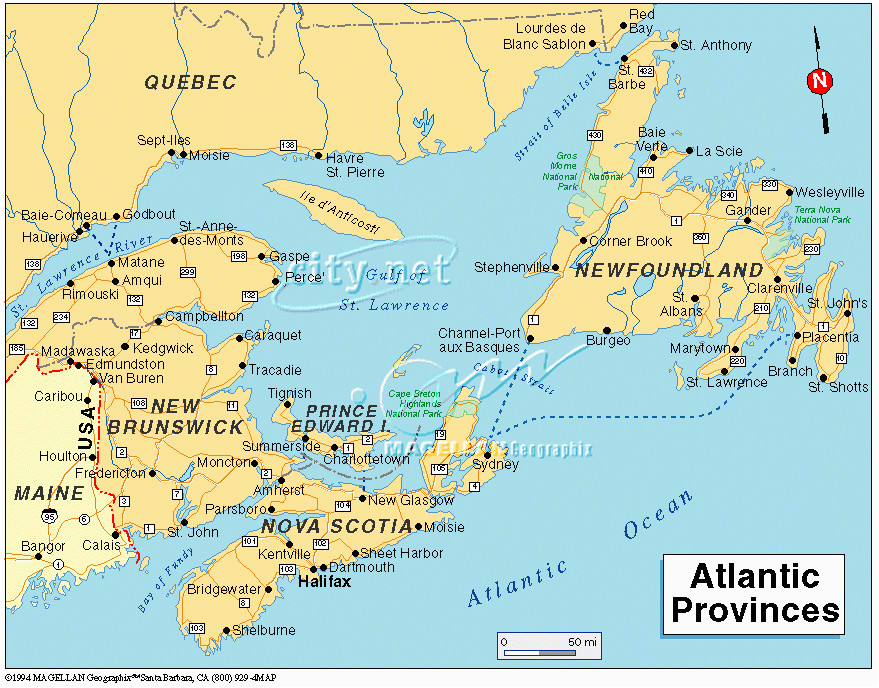experimenting with vivid colours and 'dream like' aesthetic







black and white images

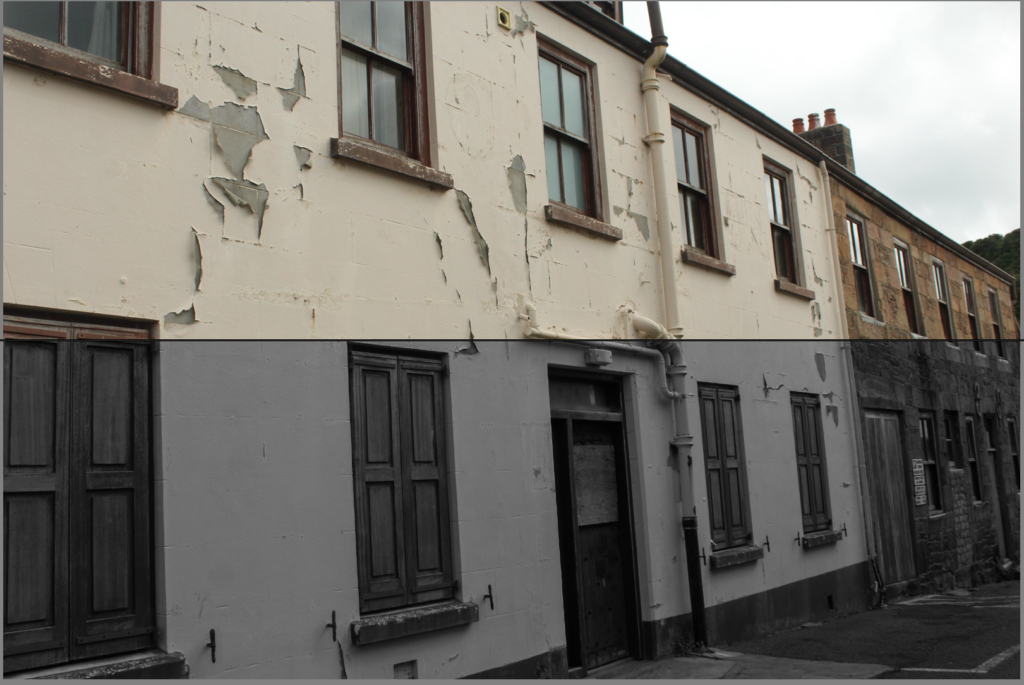



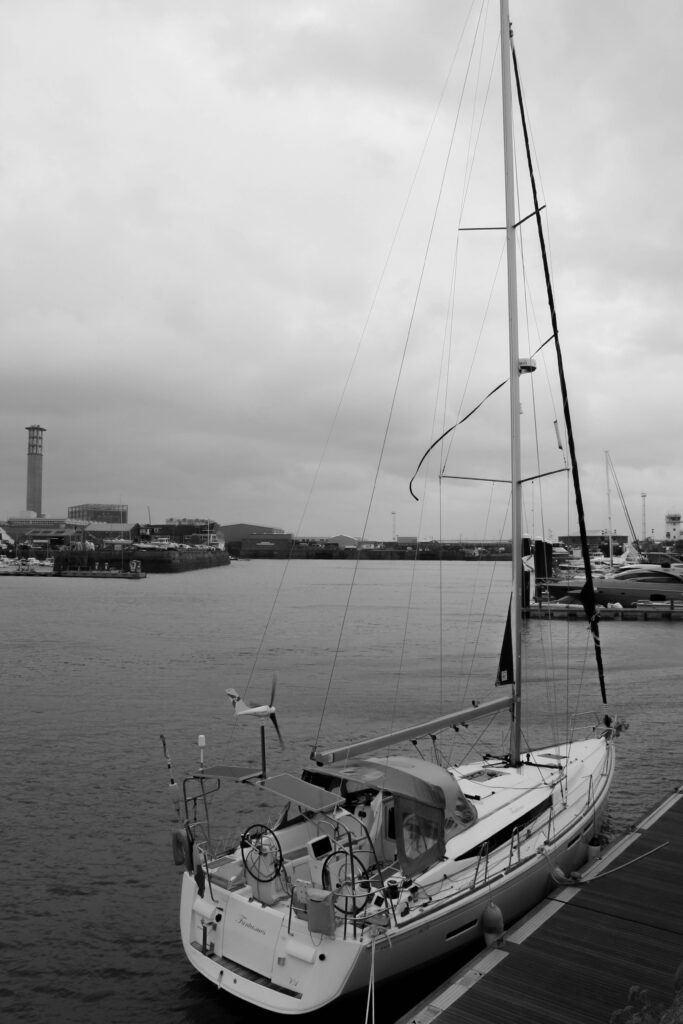



colour popping
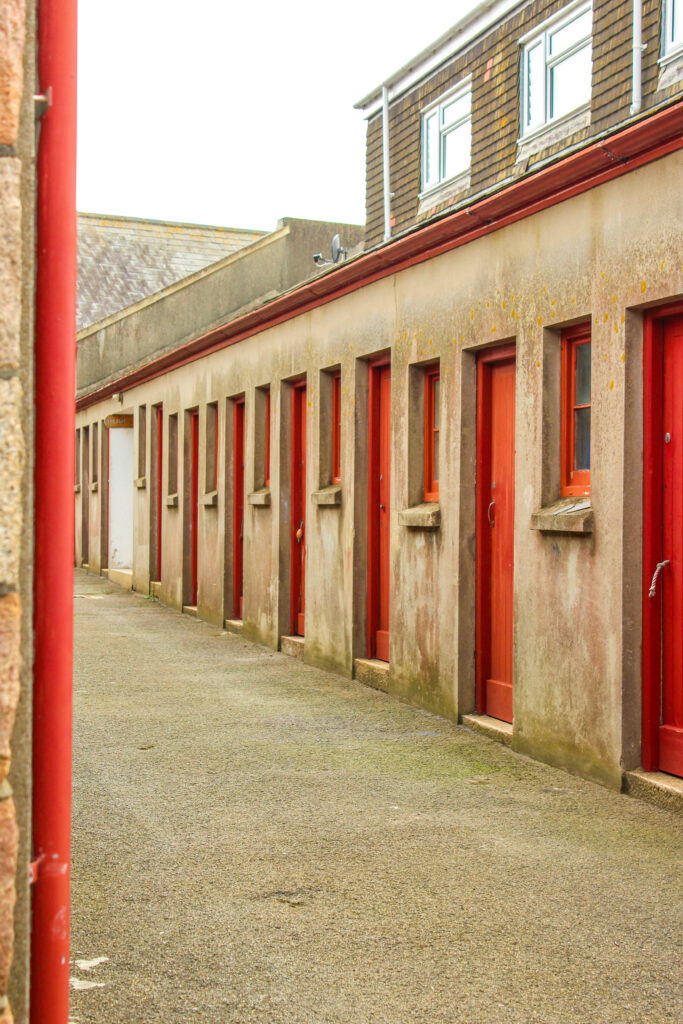

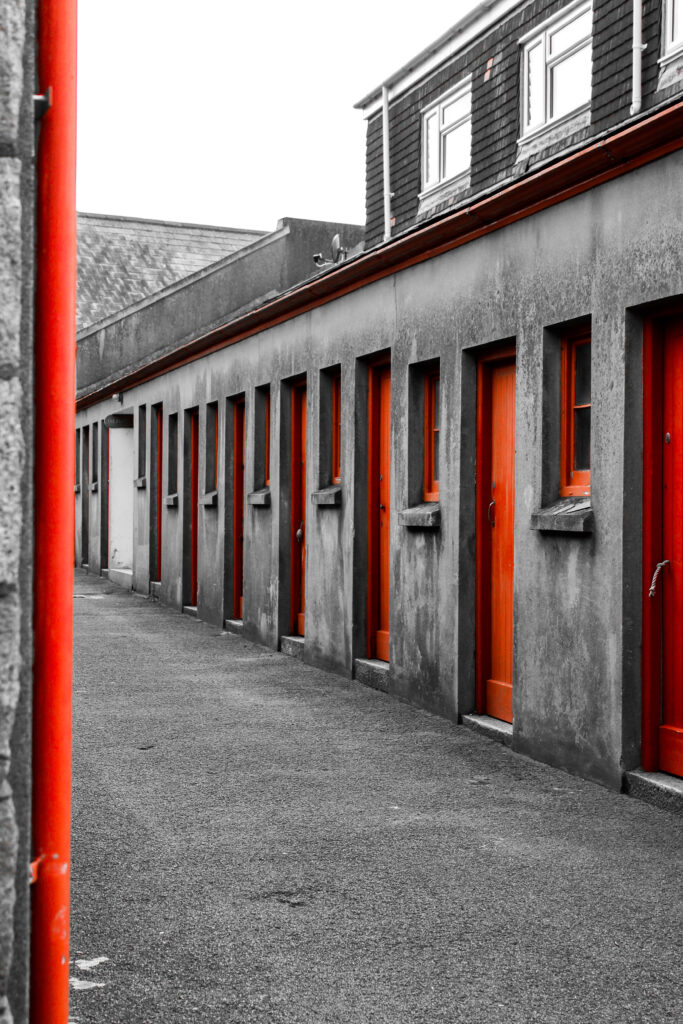




experimenting with vivid colours and 'dream like' aesthetic







black and white images









colour popping







photos rated 1-2 stars
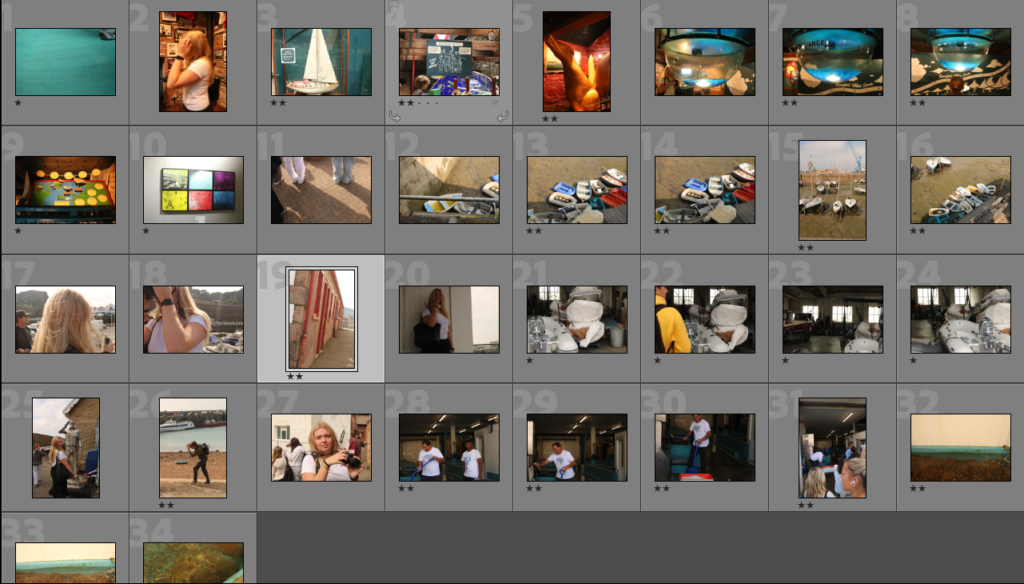
these photos are rated 1-2 stars because they didn’t meet the criteria of what I needed to accomplish inn terms of the quality of the photo itself or what the image its self consisted of.
photos rated 3-4 stars

these photos I believe are rated 3-4 stars because it has some of the criteria that is needed for project but is missing somethings that I would consider for the photos to be 5 stars. for the most part I would say the photos are missing the quality of the image or it doesn’t project the idea of the difference between the modern day harbour and the original harbour.
photos rated 5 stars

these eight photos are what I believe to be the best photos I took on this trip to the harbour as I think it captured what the harbours about as it shows how the modern day harbour works in comparison to the 1800s
Edited images



evaluation
overall I believe that I got a good set of images on the trip to the harbour as they capture the history of the harbour but also capture the changes and how its changed over the years of the harbour. However for next time I would prioritise getting more images of higher quality as I think I missed out on some images that could have been better due to the quality of the image.
We went to the maritime museum, taking photos of all of the history and facts from the boats and ships from the past and a lot of photos from the St Helier Harbour, showcasing fish such as crabs, lobsters and even a special lobster the fisherman brought out for us.

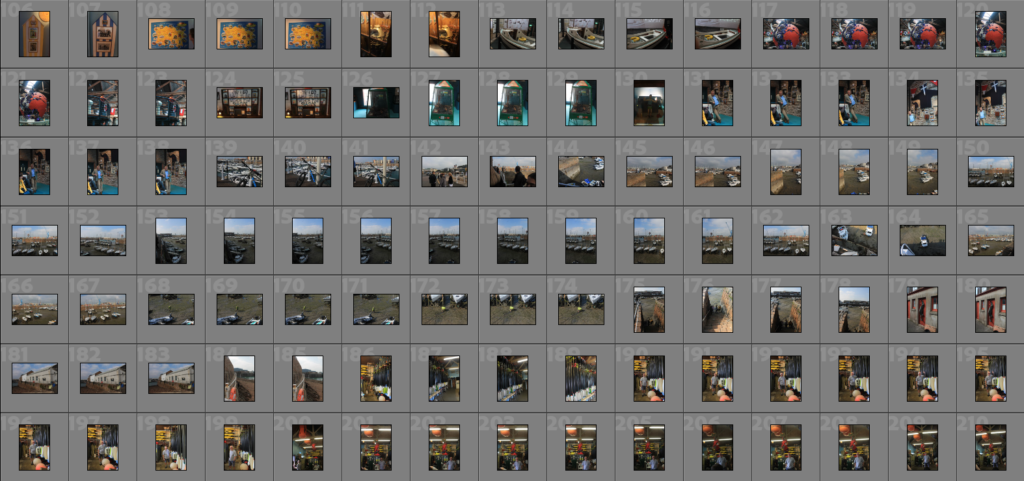



Here are some photos that are my favourite that I have taken and started to edit.



These photos are based around the harbour and the lobsters the fisherman caught. The man then let us take photos of him in his working environment with firstly his cafeteria with his dogs and work colleges, and then him lifting out a big lobster from the back-top to show to all of us and put it on the floor.

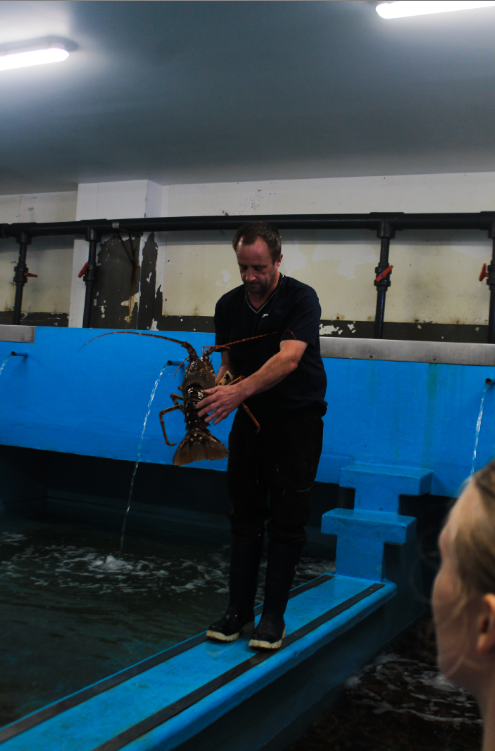







I took these photos of these old-fashioned, (some new) boats either being stored just waiting to enter the sea. Or, some boats being worked on as you see in the last photo, with a man sanding/drilling the bottom of it, potentially drilling holes or drilling something off of it.
These are some photos I really like with the B/W filter on top of it to create a dark/old style to them.

I like how the 3 faces are looking into the camera with a little grin/smile with the dog eyes peeking at the camera too. The men were in the back of the harbour which made it feel very sketchy with two blokes sat talking to each other with one on a bike with a dog on a seat.
These are some photos I have brought the saturation down and only shown the main colours of the photos, for example, the boots on the door, the door and window frames are all this orange/red colour, so I made everything else Black and white and brought out that colour a little more than standard.
The man moving the fish from the boxes into little plastic clear bags, I made the 3 bright lime green boxes stand out, but, I also wanted the mans boots and glove to be brought out as the lime green/orange is a nice opposite blend of colours that pops.


I felt that the mans apron was the main part of this photo for me, as the fish weren’t very colourful/bright, and that is the centre stage object/clothing. So, as I brought out the darkish-blue, I also saw that the air-con behind him was the same colour so I left that still blue to give the photo some front colour and back colour.
For the next photo, I saw the big pillar on the left side of the photo and knew, that this had to be the main coloured-part of the photo. So, I made everything else B/W but I saw this little barrel next to it and had to keep that with the navy blue to add a little clash of the colours.


Some other photos I have edited are these photos.

NARRATIVE STORY: What is your story?
Describe in:
NARRATIVE: How will you tell your story?
Camera Obscura & Pinhole photography:
Photography captures a moment from time and fixes it in place. Photography did not just appear one day, it took years for photography to become a known art. It emerged experimentally through Camera Obscura. The earliest known written account of a camera obscura was provided by a Chinese philosopher called Mo-tzu (or Mozi) in 400BC. He noted that light from an illuminated object that passed through a pinhole into a dark room created an inverted image of the original object. Several other scientists experimented with light passing through a small hole, but it wasn’t until the 11th century that a viewing screen was used to see the inverted image. Alhazen (or Ibn al-Haytham) is said to have actually invented the camera obscura, as well as the pinhole camera which is based on the same idea. He carried out experiments with candles and described how the image is formed by rays of light travelling in straight lines.
What is Camera Obscura?
Camera Obscura is a natural and visual optical phenomenon, where the rays of light passing through a small hole into a dark space form an image where they strike a surface, resulting in an inverted and reversed projection of the view from outside.
People believe that photography was invented in 1839, but camera obscura was used before this time.

Photo example of Camera Obscura:
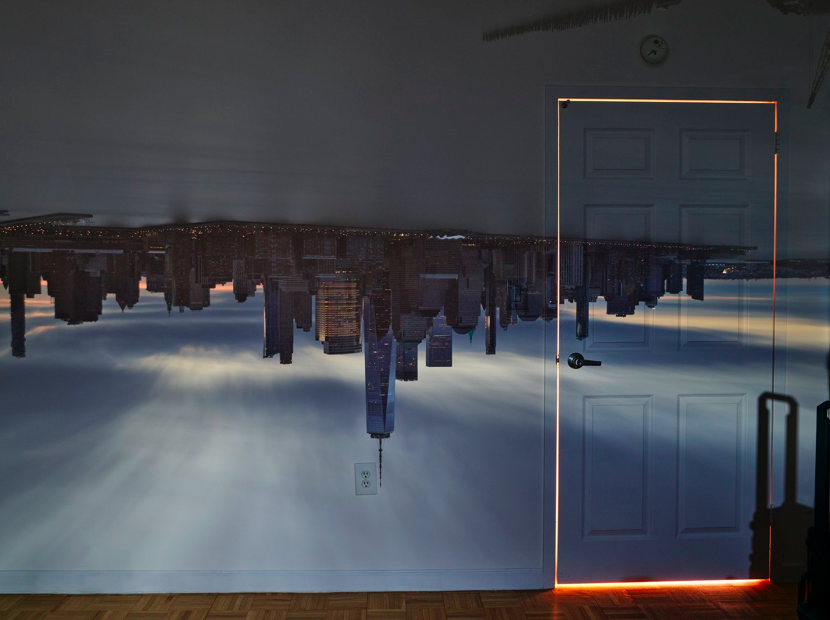
Nicephore Niepce & Heliography
What is Heliography?
Heliography is an early photographic process producing a photoengraving on a metal plate coated with certain chemicals to achieve the positive and negative tones. It was invented by Joseph Nicéphore Niépce around 1822.
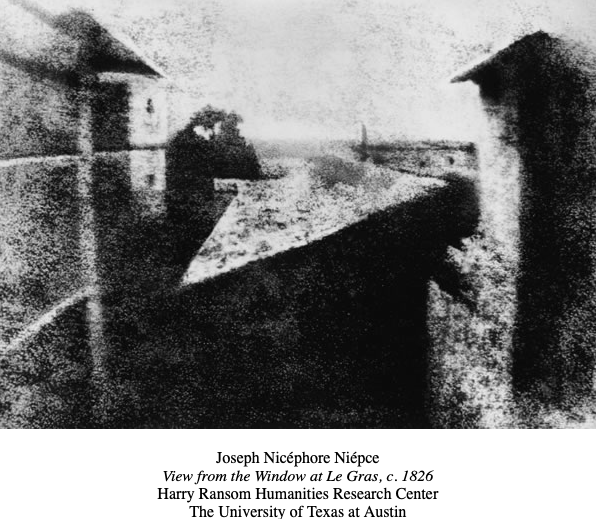
Nicéphore Niépce began experiments with the aim of achieving a photo-etched printmaking technique in 1811. By 1822, he had made the very first light-resistant heliographic copy of an engraving, made without a lens by placing the print in contact with the light-sensitive plate. In 1826, he increasingly used pewter plates because their reflective surface made the image more clearly visible. In 1827, he then produced the very first photograph.
Experimentation:
Niépce knew that the acid-resistant Bitumen of Judea used in etching hardened with exposure to light. In experiments he coated it on plates of glass, zinc, copper and silver-surfaced copper, pewter and limestone, and found the surface exposed to the most light resisted dissolution in oil of lavender and petroleum, so that the uncoated shadow areas might be traditionally treated through acid etching and aquatint to print black ink.
Photo example of Heliography:

Louis Daguerre & Daguerreotype
What is a Daguerreotype?
Daguerreotype is said to be the first commercially successful photographic process (1839-1860) in the history of photography, created by the inventor Louis Jacques Mandé Daguerre. The daguerreotype is accurate, detailed and sharp. It is very delicate because it has a mirror-like surface. Each Daguerreotype is a unique image on a silver coppered plate. This photographic process was widely used during the 1840s and 1850s.
Experimentation:
To make the image, the base is a sheet of silver-plated copper polished to a mirror finish. Then it was treated with fumes that made its surface light-sensitive, exposed it in a camera for as long as was judged to be necessary; which could be as little as a few seconds for brightly sunlit subjects or much longer with less intense lighting. The resulting image on it was made visible by fuming it with iodine vapours which formed a silver-iodine surface to the plate. The plate is then exposed to light transmitted through a lens, once exposed the plate
was removed and exposed to vapours from heated mercury, only then would the image form. Then it’s sealed behind glass in a protective enclosure as the Daguerreotype is very fragile. The image will appear either positive or negative, depending on the angle at which it is viewed, how it is lit and whether a light or dark background is being reflected in the metal.
Photo example:

Henry Fox Talbot & Calotype
Henry Fox Talbot and Louis Daguerre fixed shadows
William Henry Fox Talbot was an English scientist, inventor, and photography pioneer who invented the salted paper and calotype processes, precursors to photographic processes of the later 19th and 20th centuries. Talbot was best known as the British inventor of photography and in 1834 he discovered how to make and fix images through the action of light and chemistry on paper.
What is a Calotype?
Calotype is a photographic process introduced in 1841 where negatives were made using paper coated with silver iodide. It produces a monochrome, blue coloured print on a range of supports, often used for art, and for reprography in the form of blueprints.
Photo example:

Robert Cornelius & self-portraiture
Robert Cornelius, an American photographer and pioneer in the history of photography, was said to be the first person to produce a self-portrait.
Around October 1839, Cornelius improvised a camera obscura and made his first daguerreotype, a self-portrait outside of his family store. The image required him to pose still for 10 to 15 minutes and has survived. Other early images of his family made by Cornelius have not been preserved. His self-portrait is generally accepted as the first known photographic portrait of a person taken in the United States.
Photo example:

Julia Margaret Cameron & Pictorialism
Julia Margaret Cameron is regarded as one of Britain’s foremost photographers and one of the leading portraitists of the 19th century. She is known for her soft-focus close-ups of famous Victorians and for illustrative images depicting characters from mythology, Christianity, and literature.
Julia Margaret Cameron was born in 1815 into a wealthy, highly cultured, and well-educated family. Cameron went to school mostly in France, and her education was well rounded, but not focused on fine art.
In 1841, one of Cameron’s most important friend sent her some “Talbotypes”, early examples of photographs by Henry Fox Talbot. This influenced Cameron into starting photography. Cameron was given her first sliding box camera as a Christmas present from her daughter, Julia, in 1863. Cameron quickly devoted herself to photography and within a month of receiving her first camera, she made the photograph that she called her ‘first success’. The photograph is a portrait of Annie Philpot, the daughter of a family staying in the Isle of Wight where Cameron lived.

From this, she quickly moved on to photographing family and friends for experimentation. Cameron worked quickly and diligently preparing photographs with new equipment. These early portraits reveal how she experimented with soft focus, dramatic lighting and close-up compositions, features that would become her signature style. Cameron embraced the ambiguity around her portraits and cultivated it intentionally, making her a forerunner to the Pictorialist photographers
Pictorialism:
Pictorialism is an international style and aesthetic movement that dominated photography during the late 19th and early 20th centuries. Typically, a pictorial photograph appears to lack a sharp focus, is printed in one or more colors other than black-and-white and may have visible brush strokes or other manipulation of the surface.
Henry Mullins & Carte-de-Visit
Henry Mullins was a highly successful photographer, and was by far the most prolific of the first generation of Jersey photographers in the mid-nineteenth century. He moved to Jersey in July 1848 and set up a studio known as the Royal Saloon, at 7 Royal Square.

Henry Mullins was by far the most prolific of the first generation of Jersey photographers in the mid-nineteenth century. He produced thousands of portraits of islanders between 1848 and 1873. While numerous photographic studios opened across the town of St Helier in the 1850s and 1860s Henry Mullins continued to be the photographer of choice for leading members of Jersey society and successful local and immigrant families.
Mullins started to create ‘Cartes de visite’ (visiting cards). They consist of a print stuck to a card mount of about 4 ⅛” x 2 ½” in size. Carte de Visites were traded among Victorians and were so small that they could fit in your pocket.
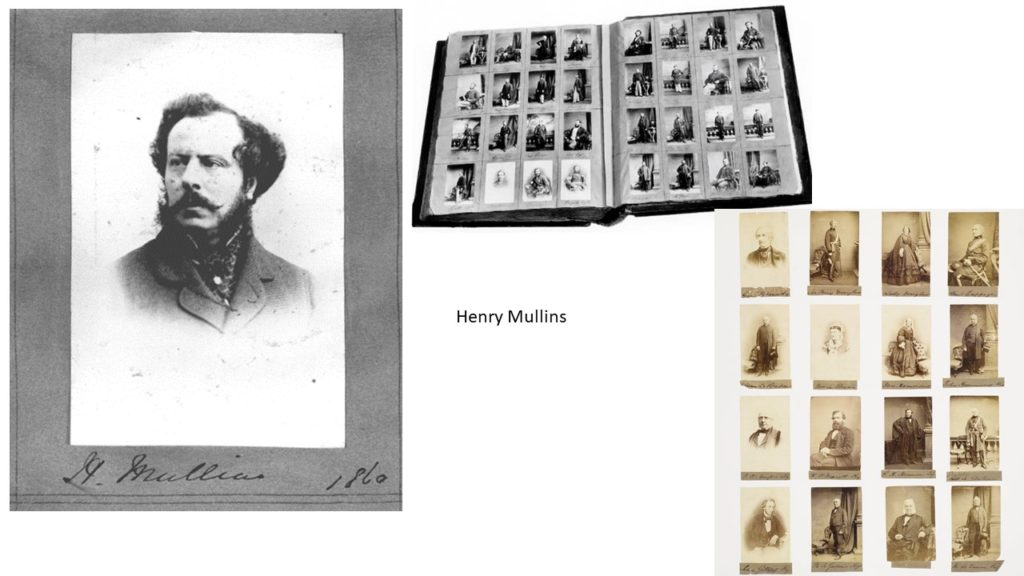
Maps of St Helier Harbour
St Helier Harbour is the main Harbour of Jersey and it is located on the south coast. Here are some maps of St Helier Harbour showing how it has developed over time:
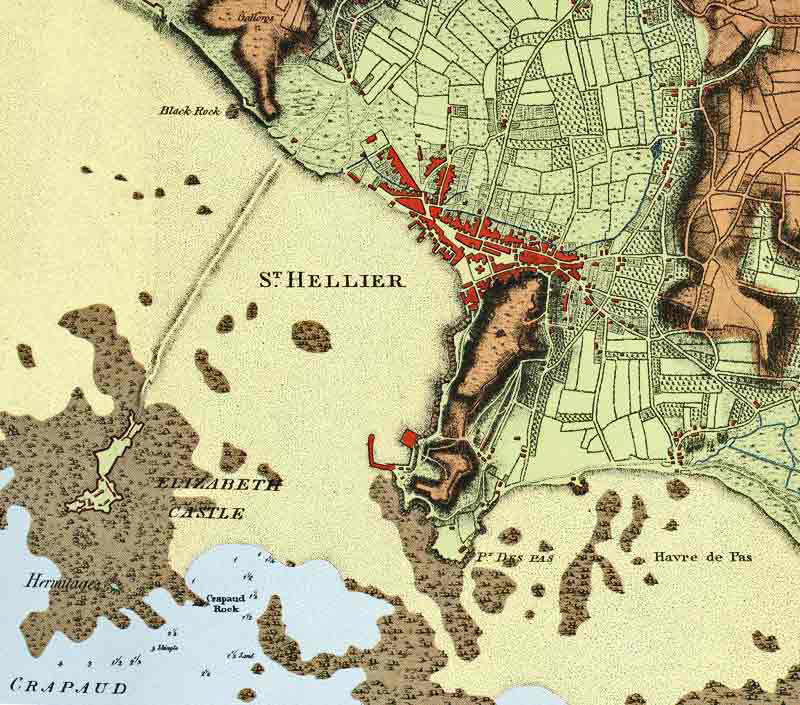
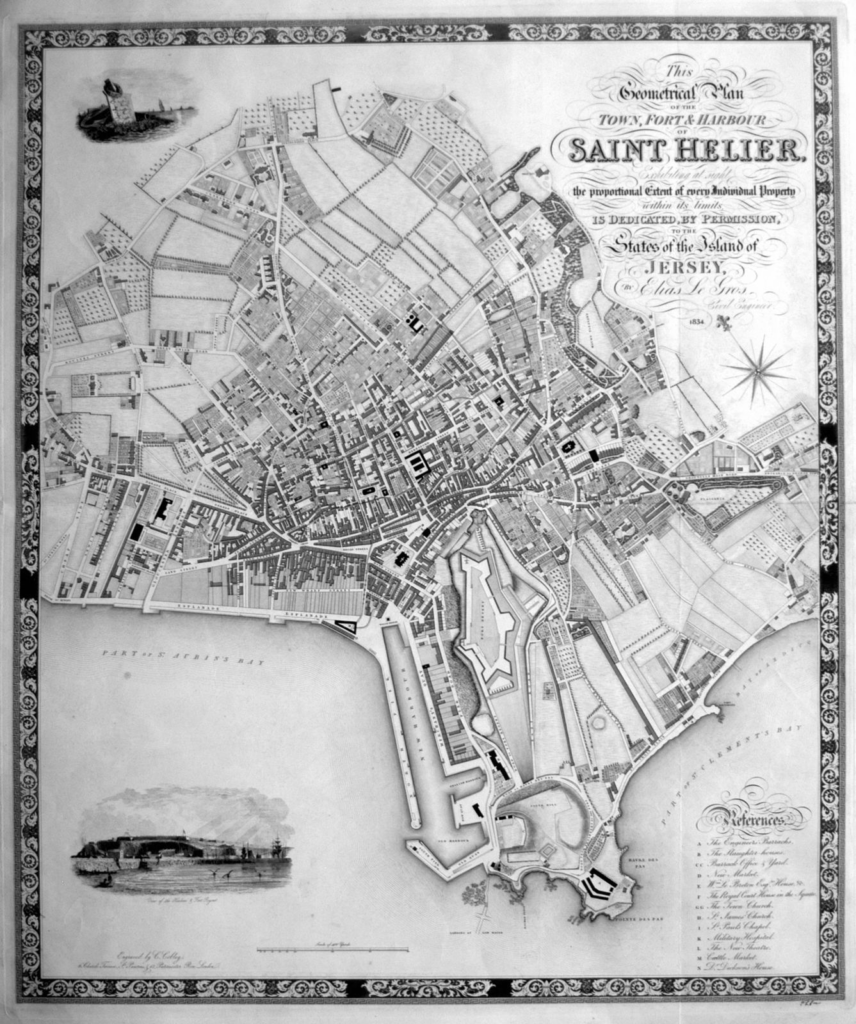
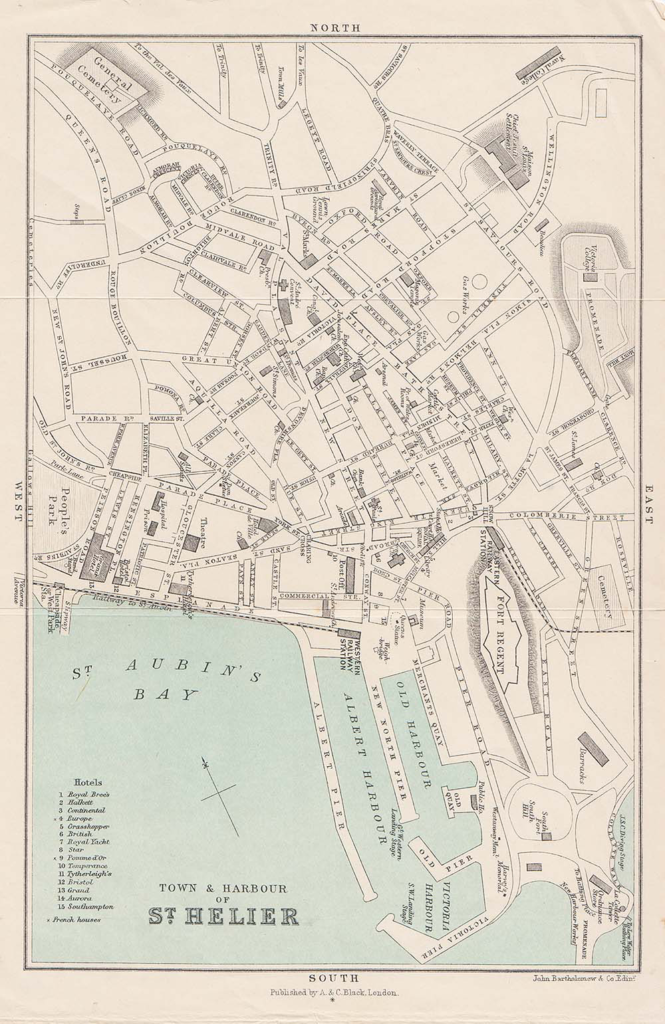
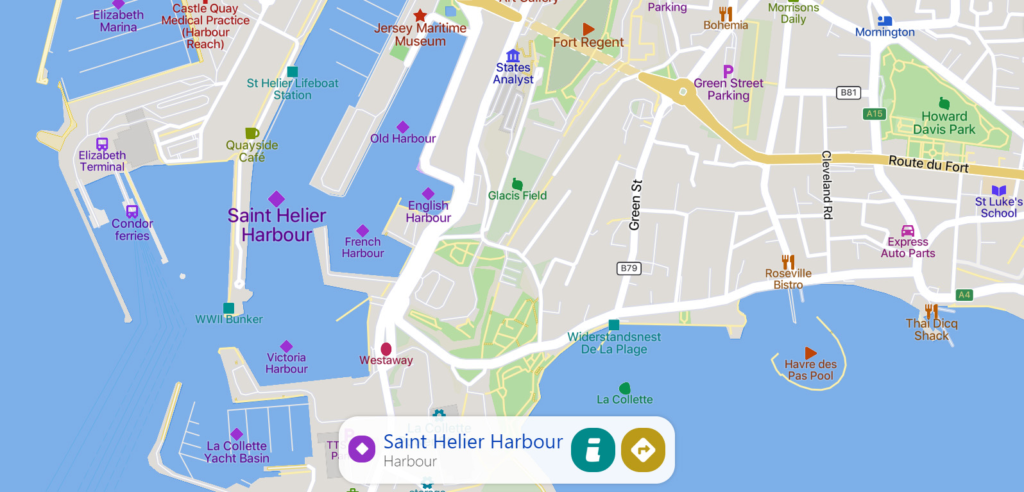
Development of St Helier Harbour
The Old English and French Harbours were the first parts of St Helier Harbour. The Old Harbour originally consisted of just a jetty until it was upgraded with a new breakwater in 1790, New North Quay.

In 1814, the merchants constructed roads to connect the harbour to town. These roads are now known as Commercial Buildings and Le Quai des Marchands. The Old Harbour also includes South Pier and the abandoned pub, La Folie Inn.

Due to the growth in Jersey’s fishing fleet, work commenced on the new South Pier in 1841, which was later named Victoria Pier, following Queen Victoria’s visit to the Island. This pier was completed in 1846 and it now is home to fish wholesalers such as Fresh Fish Company and Aquamarine Fisheries.
The following year, they had began work on Albert Pier.

Albert Pier was originally a ferry terminal due to its deep water berths, however, it has now been re-developed to berths for large vessels and yachts and the ferry terminal is now located at Elizabeth Harbour. This Harbour was constructed in the late 1980s on reclaimed land and the terminal was opened by Queen Elizabeth II on the 25th of May 1989.

There are now three main Marinas at St Helier Harbour:
La Colette Yacht Basin

This Marina is home to Jersey’s commercial fishing fleet and it is the only one of the three marinas to provide non-tidal, 24-hour access to the sea.
St Helier Marina

St Helier Marina, constructed in 1980, is mostly used for berthing private yachts. To the west of this Marina is Albert Pier and to the East is New North Way, home to Jersey’s Maritime Museum.

This Marina has been the venue for the annual Jersey Boat Show since 2008.
Elizabeth Marina

Elizabeth Marina is the newest of Jersey’s Marinas. Work began to construct this Marina in 1996 and it was completed 2 years later. This Marina has 600 berths and was constructed on reclaimed land. This area also includes Jardins de la Mer, La Frigate Cafe, the Waterfront Car Park, the Radisson Blu Hotel, Castle Quay and a Leisure and Pool complex.
Contact Sheet

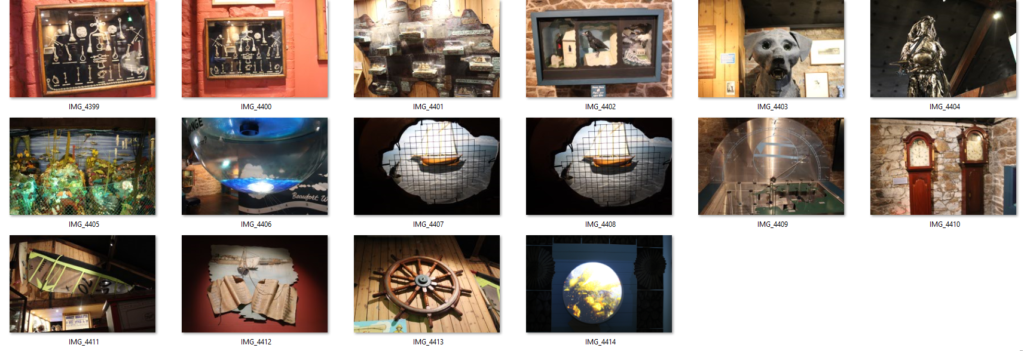
Edited Photos

Best Photos

I think this image is really strong and the writing acts as leading lines to the middle of the book. The shadows on the side of the image contrasts against the bright white pages.

The lighting in this image is very strong and highlights the writing on the letter box. The contrast between the dark brown box and the coloured writing gives the image more dimension.

I love this image and I think that it is one of my strongest images. The shape of the window being circular gives contrast against the square shape of the sea and the harsh lines of the boat.
Evaluation
Overall I think the images I have picked are all very strong and different in their own ways and they all encapsulate the maritime history.
Whilst being at the maritime museum and visiting the harbours I had the opportunity to photograph multiple harbours, buildings and historical artefacts. I attempted to incorporate a balanced amount of different images whilst primarily focusing on the harbours and boats of Jersey.
Contact Sheet.



My Edited Photos.






















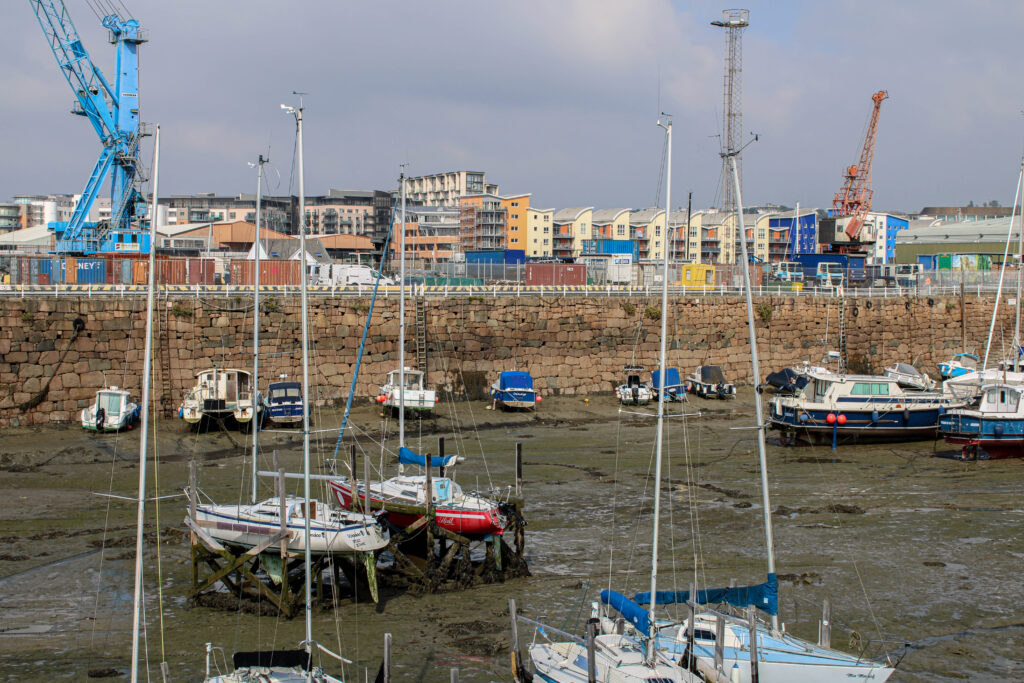









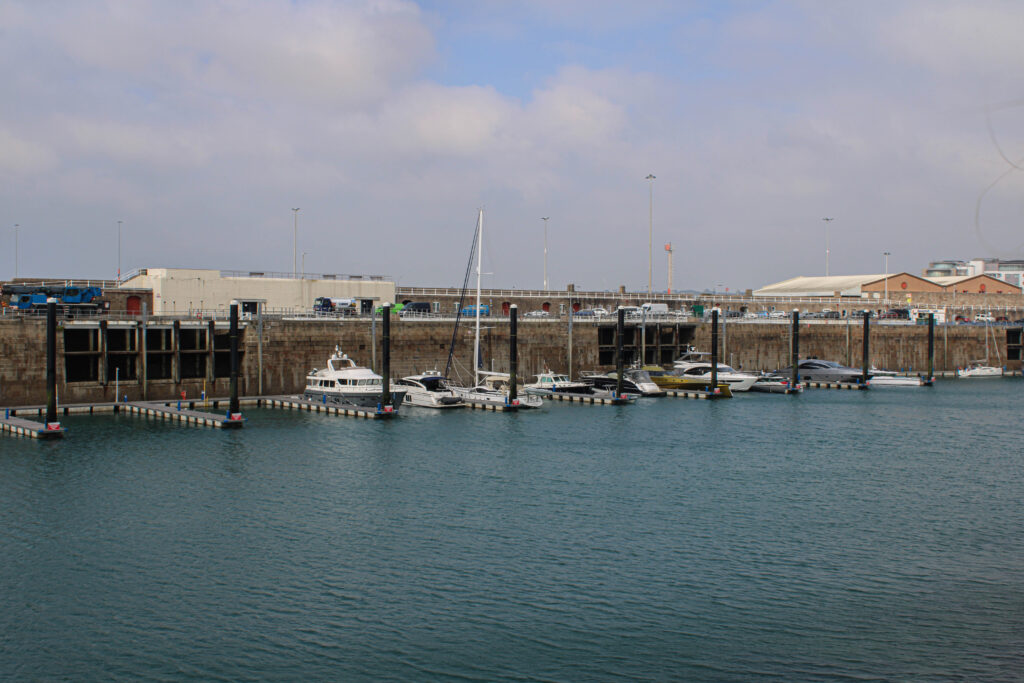





















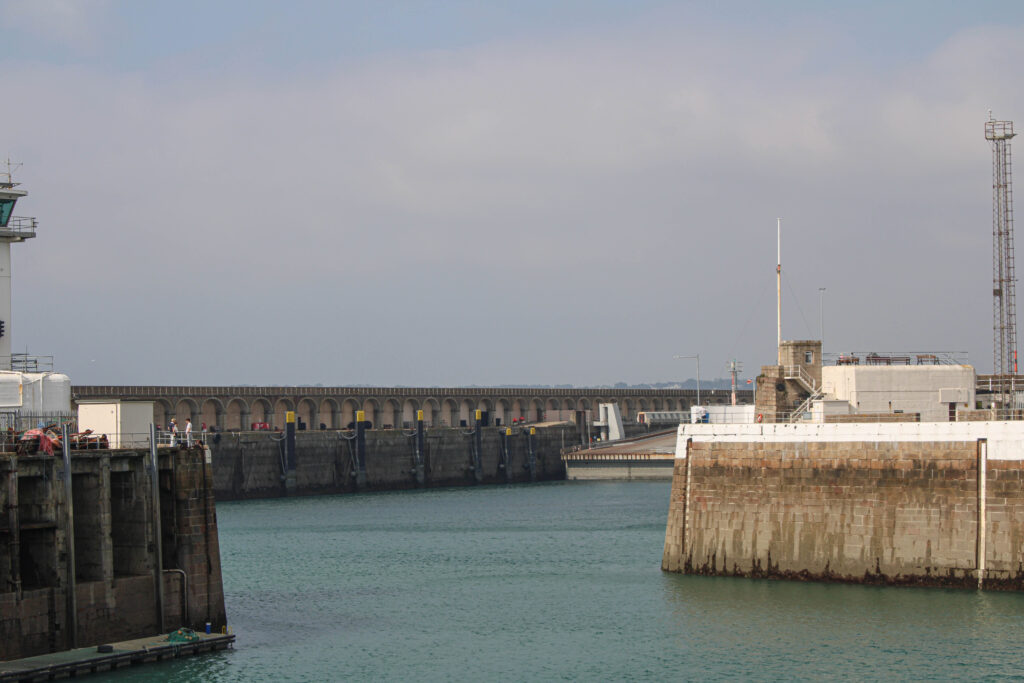

















My favourite Edited Photos.



These three Images I like because I have edited them to be very vibrant and colourful as I think they stand out and look very interesting as they are eye-catching. To make these images so eye-catching I primarily increased the vibrance and slightly the saturation. I also then made it into Adobe Photoshop and created a virtual gallery and created them into a strong arragementHere is an example of my camera settings on Adobe Lightroom.








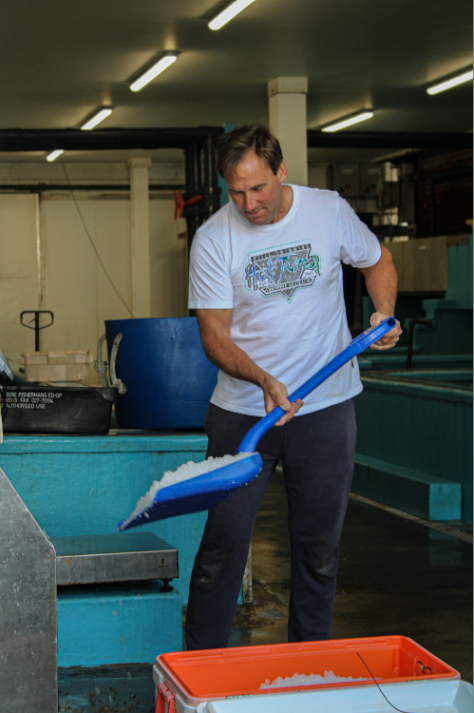





These images all consist of harbours in Jersey such as St Helier harbours and marinas which are essential when it comes to Jersey history. I like how these images show Jersey in the modern day and how it has developed into a very industrial orientated site due to fishing and boats. This makes the harbour a very loud and busy place at times with many workers doing multiple jobs surrounding fishing, manufacturing, transporting and preparing the fish.
Black and White Images.




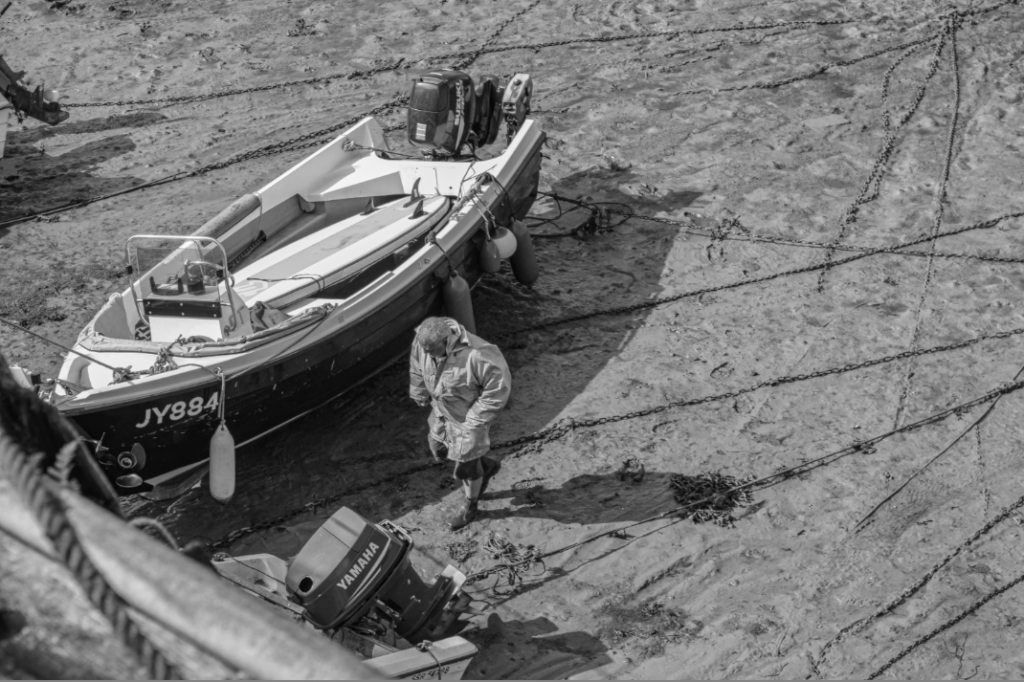
I particularly enjoyed photographing and learning about the fisherman and different workers and jobs that are essential when it comes to maintaining and caring for St Helier harbours. Photographing the workers was my favourite part of the trip as I feel these images only incorporate a second of the work that is necessary for Jersey’s fishing trade to be so successful. These photos also show the different roles there are when it comes to seafood production. I put these images into black and white as I feel these solo shots f different individuals would look strong as a quadtych with all 4 photos in a frame arrangement.

For example, here is the 4 images of people at work on Jersey harbours in a quadtych arrangement of images. I made this arrangement on Adobe Photoshop. However, to make this image stronger, I need to export my images out of Lightroom and import them into Photoshop to make the images clearer instead of using screen grabs.
To improve on this photoshoot, I would have liked to get more photos of manual workers as I think they are the most important component when it comes to harbours as they are the reason why they were created. I also think they are a great source of history and facts when it comes to harbours and boats.

For this virtual gallery I also created a tryptic where 3 vibrant photos are in an arrangement that fits the best. I also then created another arrangement of 5 images which I think makes he wall look overcrowded and confusing but was good for experimentation.
Overall, I think this photoshoot was very helpful and effective when helping my knowledge of Jersey’s maritime history. To improve, next time I would experiment with different camera settings and take more photos.
Edit 1:
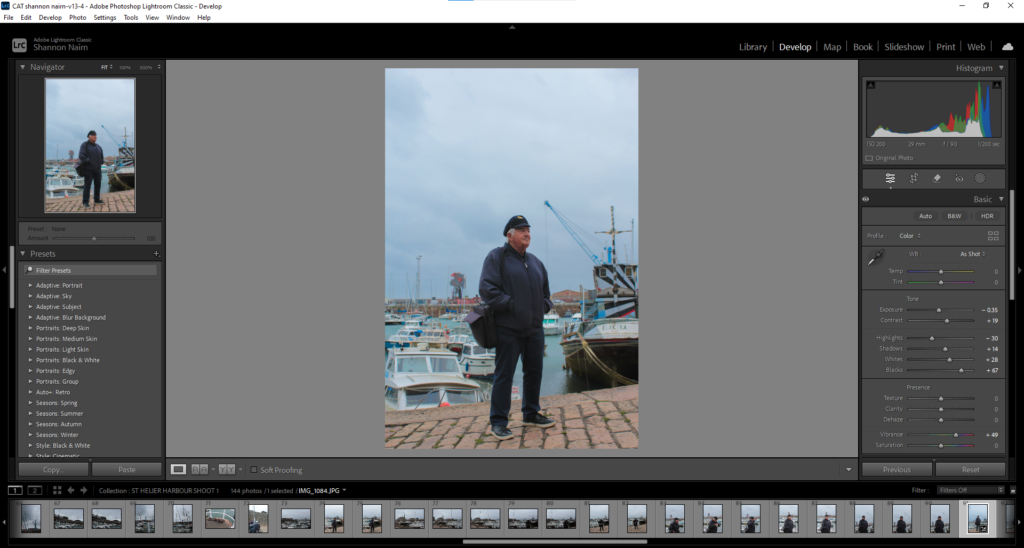
Evaluation
For this portrait image of Captain Nibbs, I had decided to play around with a few of the settings in lightroom to change the hues, blacks + whites, saturation etc. to try and create a more detailed image of captain Nibbs.
Final Mini Edit

Edit 2:

Evaluation
For this edit I have edited it to look like this by playing around with the brightness, shadows, contrast, blacks and whites ratio to create a cool effect. The edit almost looks black and white however its not completely black and white as it has some focus points of colour like the bouys and rings within the boats.
Edit 3:

Evaluation
For this edit I have decided to give it a grainy look to give it an older effect as it now looks as if it was taken years ago which creates a good story as we were focusing the old harbour and the old cod trades from as far back as the 16th century. It has a nice colour contrast and rusty, grainy look which adds a nice little detail to the edit.
Edit 4
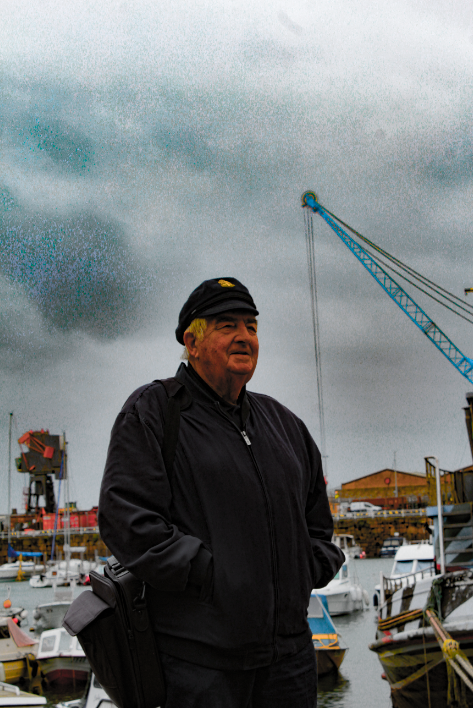
Evaluation
Edit 5

Evaluation
Edit 6

Evaluation
Edit 7

Evaluation
Edit 8

Evaluation
Edit 9,10,11



Evaluation
Edit 12

Extra edits









With this photoshoot I feel I was very successful as I captured some very strong points within the shoot, such as these images of Captain Nibbs stood within the centre of a place that he knew very well when he was a Sea captain. Or where he is showing us some information about the fishing life and telling us what it is all about. I have got a wide variety of different coloured edits, different shades and ones that have different themes and create a nice story.
Top 5 best images and evaluation

Evaluation
I think this is one of my best images as Captain Nibbs is stood on the slope of the harbour with all the boats in the background. This image has good composition, I took it from a lower angle to capture his stance better. This image almost creates a story about Captain Nibbs as an ex fishermen and boat captain with him stood at the harbour all these years after retiring from his role.
Image 2

Evaluation
Image 3
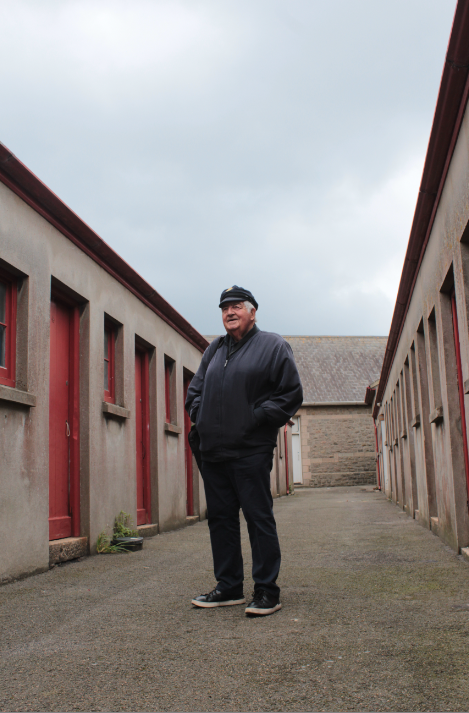
Evaluation
Image 4

Evaluation
Image 5


Fishermen in the Channel Islands had set up profitable trade routes between Canada, Europe and America by the 1750s. They established bases on the Gaspé Coast where they could salt and prepare the cod-fish. It was during the 15th century that Jersey mariners reached Canada. Jersey fishermen were among the 10,000 European fisherman by the 1580s to make the transatlantic voyage to these areas every year to fish for cod.
There was an established trade route during the Roman period between Alet, in St Servan, and Hengistbury Head in Dorset.


Although these boats certainly called in to Jersey as well, Guernsey was the favoured stop off point, because of St Peter Port’s natural deep water. Furthermore, the Roman cargo boat which was raised from this harbour at St Peter provides information on the type of boat which would have travelled on this route.
Jersey cod merchants exchanged cargoes of wine, brandy, dried fruit, citrus fruit, oil, skins, furs, coffee, sugar, salt, and tobacco for cod-fish. Most of the cod was sold to Mediterranean ports, because of the large demand of fish in those countries. These cargoes were brought back from these ports, and often taken straight to an English or Northern European port, then returning home to Jersey with a third cargo, though some would come straight back to Jersey.


Jersey benefitted from the constitutional relationship it had with Britain and the legacies of colonialism based on a slave plantation economy during the first Industrial Revolution, especially during the peak of the cod trade. Fishing vessels for the Jersey fleet had moved from being built in the outposts of Canada to Jersey, along with the large scale commercial shipyard starting operation in 1815. By the 1850s, Jersey had 300-400 ships with a tonnage of over 40,000. It is estimated that by the 1860s, the Channel Islands and Jersey-built wooden fishing fleets made up about 6% of the total tonnage of wooden fishing fleets built in the British Isles. This significant growth of the economy could have also been correlated to the population increase doubling from 28,600 in 1821 to 57,020 in 1851.
